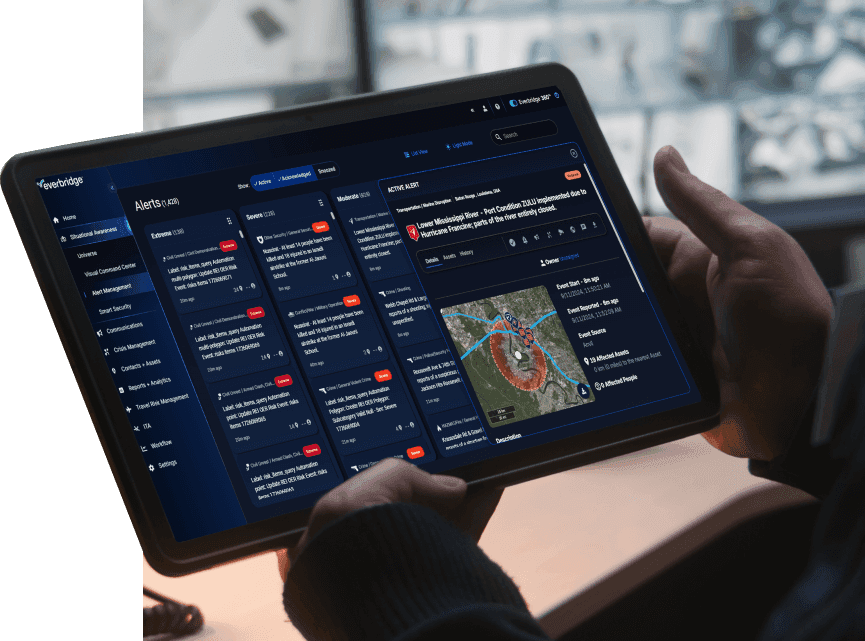Business travel has long been essential to organizations looking to triumph across national and international landscapes. However, the evolving impacts of COVID-19 brought dramatic changes to the world of travel and put business travelers at an increased risk of harm. While canceled flights, closed borders, and potential quarantine are inarguably part of the problem, there are more risks to business travelers than meet the eye, putting organizations in a more difficult position when it comes to ensuring duty of care.
All employers are morally or legally obligated to fulfill a duty of care to their employees, regardless of location. This duty of care requires employers to make decisions that benefit the company while preserving the health, safety, and well-being of employees – in office, at home, or while traveling. While determining the appropriate duty of care depends on several factors, a failure to provide the appropriate duty of care to employees can have catastrophic consequences for organizations. As a result, it’s paramount that organizations not only fulfill their duty of care but also maintain duty of care standards as they shift during national and international crises.
The changing world of travel
In today’s changing world, businesses need to be risk resilient across their operations – and that includes business travel. Since 2020, airline travel has declined with thousands of canceled flights and hundreds of grounded planes. While we are seeing an increase in air travel once more, domestic air travel is still down 19% from January 2019, and international travel remains down 13% from pre-COVID levels.
While overall travel numbers are down, risks continue to threaten business travelers. In addition to canceled flights, lost passports, quarantine, and vaccine mandates posing threats to travelers across the globe, geopolitical, operational, cyber, security, and terrorism risks are increasing. With threat levels rising, the travel landscape has transformed, and organizations must now adapt or risk possible negligence charges.
While very few travel risk management (TRM) guidelines existed in previous years, organizations are now required to provide a standardized travel risk management program to their employees. With pre-trip planning more important than ever before, organizations must be hyper-aware of their employees’ locations during travel while also monitoring the risk associated with each destination. The need to ensure employee safety as businesses journey to new, familiar, and high-risk destinations is a massive undertaking that requires new approaches to duty of care and people risk management.
What do increased threats mean for business traveler safety?

Over the last two years, the number of major global incidents has tripled. With an increased number of terrorist attacks, civil unrest, natural disasters, fatal air and rail-related accidents, and extreme weather disruption, it is now harder than ever for companies to keep traveling employees safe.
Perhaps the most alarming threat to business travelers in the post-COVID era is the rise of dysfunctional, fragile, and vulnerable nation-states stemming from the COVID-19 pandemic, which has put business travelers at an increased security risk. As the gaps in state security become chasms, business travelers also face an increase in terror-related threats. With the number of online radicalized individuals increasing, spikes of social unrest have emerged, putting previously safe business travelers in harm’s way as they journey to once familiar and secure destinations.
In addition to these exacerbated traditional threats, a new series of business challenges have emerged from the COVID-19 pandemic. Namely, bad actors are now using the confusion of new travel restrictions to exploit and target businesses and business travelers. Consider the sale of black-market vaccination cards and negative tests. As more countries require proof of vaccination, the demand for fake vaccination cards and negative tests has grown. Those using fake vaccination cards and negative tests can put valuable and compliant business travelers at risk of harm or leave them stranded in a location due to COVID-19 exposure. The increased demand for traveler data from threat actors has also led to a spike in cyber attacks, putting businesses and business travelers at risk.
Ensuring Duty of Care: Keeping Business Travelers Safe
Every company has a duty of care to its employees. Duty of care is a company’s legal and moral obligation to protect employees from risk or harm. Organizations should take all the necessary steps to promote the safety and well-being of their employees, including those traveling for business.
There are many ways organizations can keep employees safe, with duty of care acting as an umbrella term for multiple forms of people risk management. However, organizations looking to ensure duty of care to business travelers will find protecting traveling employees very different. In the home office, employers can protect their employees from harm with security check-ins, access cards, sanitation measures, promotion of a healthy work environment, and so forth; business travelers are exposed to more threats than their in-office counterparts.
The ability to locate, assess, and contact an employee when their safety is compromised is an essential feature of a strong people risk management and travel risk management strategy. However, with business travelers commuting to familiar, unfamiliar, safe, and dangerous destinations outside of the employer’s location (in time zones that are often different than the home office), it can be difficult for employers to locate, assess, or contact the at-risk business traveler. To protect vulnerable business travelers, employers have legal and moral obligations to ensure traveling employees have information and tools to keep safe from harm, regardless of time or location.
Combat threats to business travelers with successful travel risk management
Having the right technology to promote and secure business traveler safety is essential to travel risk management and broader people risk management strategies. With a travel risk management (TRM) platform, organizations can help protect traveling employees regardless of time or location.
A TRM solution should be personalized to your business, avoiding a plug-and-play approach. With Everbridge, organizations are evaluated based on their unique risk profile, allowing for constant innovation in travel risk management and broader people risk management strategies.
With a successful TRM solution in place, organizations can obtain a 360-degree view of the business traveler and any business traveler risk, allowing organizations to anticipate and respond to critical events before, during, and after they happen. Whether it be a minor or major event impacting your business travelers, a TRM solution can help provide organizations with the insight and tools necessary to survive and thrive in a world rife with business traveler threats.
For example, with the ability to visualize active and pending business traveler locations and destinations based on the most current flight, ground transportation, and hotel itinerary information, a TRM solution allows organizations to display and monitor business traveler risk as it unfolds. When a threat appears, business travelers can use a TRM solution to report them, triggering an agile organizational response through centralized risk monitoring, automation, personalization, and two-way communication. By integrating TRM into people risk management strategies, organizations can rest easy knowing business travelers are kept safe with meaningful alerts, increased compliance, 24/7 support, and the ability to rapidly respond to a critical event when every second counts.

